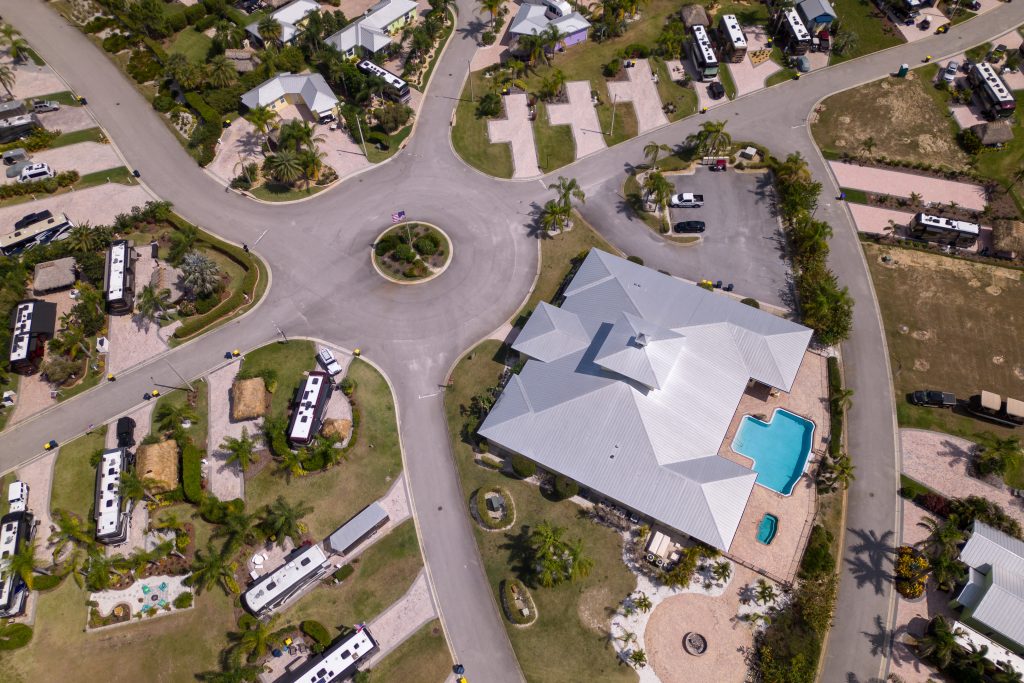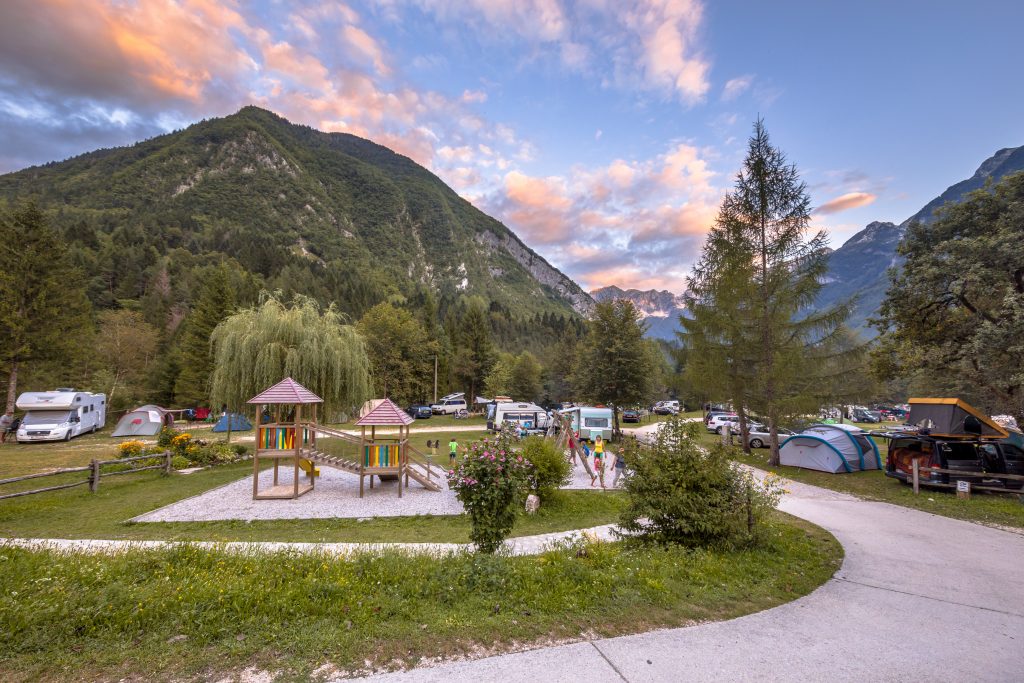Expert’s Guide To Long-Term RV Parks In 2023
Traveling in an RV offers a unique taste of freedom and adventure. For some, this means hitting the road for a few weeks each year. For others, it translates to a full-time lifestyle. No matter what your vision entails, understanding the intricacies of long-term RV parks is crucial to ensuring a smooth, enjoyable journey.
This comprehensive guide is designed for everyone – from the RVing newbie to those contemplating a shift to full-time RV living. So whether you own an RV or are merely exploring rental options, read on to navigate the world of long-term RV parks with ease.
Introduction to Long-Term RV Parks

What are Long-Term RV Parks?
Long-term RV parks, often referred to as extended stay RV parks, are campgrounds designed to accommodate individuals who desire to stay in a single location for a considerable duration – typically a month or longer.
Unlike typical RV parks that operate on daily or weekly terms, long-term RV parks offer the convenience of settling down in one spot, serving as a temporary home base while you explore the surroundings at your own pace.
Benefits of Staying at Long-Term RV Parks
Cost Savings
One of the most compelling benefits of long-term RV parks is cost-effectiveness. As with many services, committing to a longer term often results in lower daily rates. When you compare the cost of a month-long stay at an extended stay park versus the nightly rates at traditional parks, the savings can be substantial.
Community Bonding
Staying at a single location for an extended time fosters a sense of community. Long-term residents often form bonds, participate in shared activities, and create lasting friendships. This social aspect can enhance your RVing experience significantly, especially if you’re transitioning to full-time RV living.
Amenities and Services
Long-term RV parks usually provide a range of amenities and services to make your stay more comfortable. From laundry facilities to Wi-Fi and recreational activities, these parks strive to create a home-away-from-home atmosphere.
Choosing the Right Long-Term RV Park

Location
The location of the RV park plays a crucial role in your overall experience. Some might prefer a peaceful, secluded park amidst nature, while others may opt for parks near cities or tourist attractions. Consider your lifestyle and what you want out of your long-term stay while choosing the location.
Budget
Budget is another crucial factor to consider. The cost of long-term RV parks can vary dramatically depending on their location, amenities, and the time of year. It’s essential to find a park that fits comfortably within your financial means to ensure a stress-free stay.
Amenities
The amenities provided can significantly influence your living experience. Some parks offer only the basics – a spot to park your RV, electric hookups, and perhaps a laundry facility. In contrast, others may provide a whole host of luxuries, including swimming pools, game rooms, fitness centers, and even on-site convenience stores.
Understanding Long-Term RV Park Fees
Long-term RV park fees may initially appear more costly than those of short-term parks, but when you break it down to a daily rate, the long-term option generally provides significant savings. However, understanding the nuances of these fees can help prevent unexpected charges and help you manage your budget more effectively.
Base Rate
The base rate is the fundamental cost you will pay for your stay. It’s important to understand what is included in this fee. Generally, it covers the site rental and access to the basic amenities of the park, such as restrooms, showers, and common areas.
For example, long-term rates at a KOA campground typically include the site rental and access to campground amenities like picnic areas, dog parks, and other recreational facilities. However, what’s included in the base rate can vary widely among different parks, so always verify what’s covered.
Additional Fees for Premium Sites
If you’re seeking a prime location within the park, such as a waterfront site or a site with extra privacy, you may need to pay a premium site fee. These sites usually have better views, more space, or additional amenities like a private picnic area or upgraded hookups.
Utility Charges
While some parks include utilities (water, sewer, and electricity) in their base rate, others might charge separately, especially for long-term stays. Check whether the park uses metered utilities, where you pay for exactly what you consume, or if there’s a flat utility fee.
Extra Services
Additional charges can come into play for extra services or facilities like Wi-Fi, cable TV, laundry, or propane delivery. These services might not be included in the base rate and can add up over time.
Guest and Vehicle Fees
Some parks may also have extra fees for additional vehicles or guests beyond a certain number. If you’re planning to have visitors or if you have more than one vehicle, check the park’s policy on guest and vehicle fees.
Rules and Regulations in Long-Term RV Parks
Living harmoniously in a community involves respecting certain rules and regulations. These can vary from park to park but typically include policies on:
- Pets: There might be rules about pet leashing, breed restrictions, or specific pet-friendly zones within the park.
- Quiet Hours: To maintain a peaceful environment, most RV parks have defined quiet hours when loud noises or music are prohibited.
- Vehicle Condition: Some parks may have rules about the type and condition of RVs they allow. They might also have stipulations about the upkeep of your site, such as prohibiting clotheslines or outdoor furniture.
Before you commit to a long-term stay, familiarize yourself with the park’s rules to ensure you can comfortably abide by them.
Impact of Seasonal Changes and Workamping in Long-Term RV Parks

Seasonal changes can greatly impact your RV living experience. As you prepare for life in a long-term RV park, it’s important to understand how different seasons might affect not only your comfort and activities but also job opportunities if you’re considering workamping.
Winter: Preparing for the Cold
In colder months, your priority is to keep your RV and yourself warm while preventing any damage from freezing temperatures. Therefore, winterizing your RV is essential. This involves insulating your RV, protecting your water lines, and making sure your heating system is functioning optimally.
You might want to invest in skirting for your RV, which helps keep the undercarriage warmer and prevents freezing of water lines and tanks.
In addition, consider the availability and cost of heating fuels like propane, as you will likely use more to keep your RV warm. Similarly, be prepared for potential park closures or limited services in some areas due to weather conditions.
Summer: Staying Cool and Conserving Energy
During the warmer months, managing heat and humidity becomes a priority. Ensuring your air conditioning unit is in good working order before the heat sets in is vital. You may also want to use window coverings to reduce heat buildup inside the RV, and if your site is not shaded, a canopy or awning can make a significant difference.
Remember, running the air conditioner continuously can draw a lot of power and increase your energy costs. Be mindful of your energy usage and try to utilize natural ventilation as much as possible.
Workamping Opportunities
Workamping, a concept where you work while living in your RV, often sees a seasonal trend. Many RV parks hire extra help during their peak season, which is typically summer for most parks, especially those in popular tourist areas. Jobs can range from park maintenance to front desk help, cleaning, or organizing activities. In some cases, workampers can earn a free site along with other benefits in exchange for their work.
Off-season workamping jobs, although fewer, are also available. For example, Amazon’s CamperForce program hires RVers for warehouse jobs during the winter holiday season.
Adjusting your travel and work plans with the changing seasons can help you maximize your comfort, minimize your expenses, and potentially find lucrative workamping opportunities. A good understanding of the seasonal patterns at your chosen destination will ensure that you are well-prepared for a satisfying stay.
For even more information about workamping, check out this article here!
Major RV Parks That Offer Long-Term Stays

When it comes to long-term RVing, not all parks are created equal. Some parks, renowned for their facilities, locations, and commitment to guest comfort, stand out among the rest. Below are a few major RV parks known for their long-term stay offerings.
Thousand Trails
With over 80 RV parks across North America, Thousand Trails offers a popular membership program that includes options for long-term stays. Their parks offer a range of amenities from pools and hot tubs to hiking trails and mini-golf, ensuring you have plenty of recreational opportunities during your stay.
KOA (Kampgrounds of America)
KOA operates over 500 campgrounds across North America and is one of the most well-known names in the industry. Many KOA campgrounds offer long-term stay options with amenities like Wi-Fi, laundry facilities, and recreational activities. Their locations range from downtown areas to more remote and scenic environments, offering something for every type of RVer.
Sun RV Resorts
Sun RV Resorts operate over 140 RV parks across the United States and British Columbia. They offer a variety of resort-style amenities, including pools, fitness centers, and organized activities. Their parks cater to both short-term vacationers and long-term residents, providing a vibrant and diverse community.
Good Sam RV Parks
Good Sam is another major player in the RV park industry, with over 2,400 affiliated parks across North America. They offer a club membership with benefits like discounted rates and a dedicated RV trip planner. Many Good Sam-affiliated parks offer long-term stays with comprehensive facilities.
When choosing a long-term RV park, consider your specific needs and preferences, including location, budget, amenities, and community atmosphere. Whether you opt for a large, resort-style park or a smaller, more laid-back environment, there’s a long-term RV park out there that’s perfect for you.
Conclusion: Is a Long-Term RV Park Right for You?
Choosing to stay in a long-term RV park can offer a unique blend of adventure and stability. It’s an opportunity to explore new regions without giving up the comforts of a semi-permanent home.
Whether you’re new to the RV scene, looking to shift to full-time RV living, or an experienced RVer exploring more travel options, understanding and choosing the right long-term RV park can significantly enhance your overall experience. Safe travels!